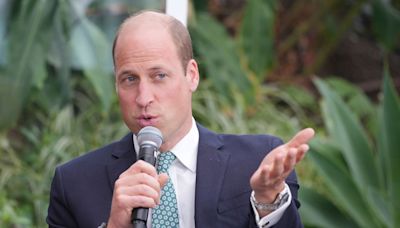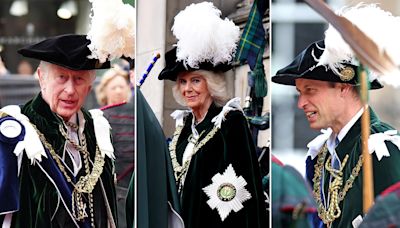Search results
William III (William Henry; Dutch: Willem Hendrik; 4 November 1650 – 8 March 1702), also widely known as William of Orange, was the sovereign Prince of Orange from birth, Stadtholder of Holland, Zeeland, Utrecht, Guelders, and Overijssel in the Dutch Republic from the 1670s, and King of England, Ireland, and Scotland from 1689 until his death ...
Jun 20, 2024 · William III, stadholder of the United Provinces of the Netherlands (1672–1702) and king of England, Scotland, and Ireland (1689–1702), reigning jointly with Queen Mary II (until her death in 1694). He directed the European opposition to Louis XIV and, in Britain, secured the triumph of Protestantism.
Sep 15, 2022 · William III of England (also William II of Scotland, r. 1689-1702) became king of England, Scotland, and Ireland after the Glorious Revolution of 1688. Protestant William, Prince of Orange, was invited...
A Dutchman by birth, part of the House of Orange, he would later reign as King of England, Scotland and Ireland until his death in 1702. William’s reign came at a precarious time in Europe when religious divide dominated international relations.
Jul 8, 2022 · William the Silent (also known as William of Orange) was the leader of the Dutch Revolt in the Netherlands between 1568-1584, which established the Independent Dutch Republic.
William was the son of Charles I's daughter, Princess Mary and William II, Prince of Orange, in the present-day Netherlands. The House of Orange-Nassau remains the reigning house in the Netherlands today.
A history of William III (of Orange), married to Mary II. William became King of England, ruling jointly with his wife, in the 'Glorious Revolution' and led his...
Feb 17, 2011 · William was born in the Hague in 1650. Although his mother Mary was English (a daughter of King Charles I), his father William (who died of smallpox days before his son's birth) was an Orange...
One of William's main reasons for accepting the throne was to reinforce the struggle against Louis XIV. William's foreign policy was dominated by the priority to contain French expansionism. England and the Dutch joined the coalition against France during the Nine Years' War, 1689-97.
William of Orange (part of what is now known as the Netherlands) had a double connection with the royal house of Stuart. He was the son of Princess Mary, daughter of Charles I, and he married his cousin, another Princess Mary, the daughter of James VII and II (by his Protestant first wife Anne Hyde).




